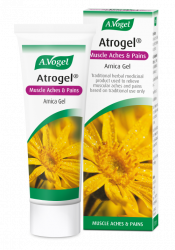Take care to repair – why we need time to recover

Muscle growth and flexibility begins after your workout, and this can’t happen unless you give yourself proper recovery time. If we continue to push and try to build on fatigue we experience more inflammation. After an intense workout, DOMS (Delayed Onset Muscle Soreness) is likely to occur. DOMS is characterised by muscle pain, tenderness, stiffness, reduced motion and flexibility, it is a completely natural (although sometimes frustrating) part of recovery. Try to give yourself between 24 and 72 hours of recovery and rest from using the same muscles.
Feed your muscles

Did you know that your pre-workout nutrition is just as important in terms of recovery as your post-workout nutrition? High quality protein and complex carbohydrates are key, particularly for intense workout sessions.
Protein sources are required to rebuild muscle tissue and to supply the building blocks for various cells, tissues, enzymes, and hormones. Protein helps to feed your muscles fuel to grow and repair. Carbohydrates are your muscles major source of energy and they are essential for refuelling your body’s glycogen stores. Often it is recommended that you eat a carb-rich snack prior to exercising because if you don’t have enough glycogen your body begins to use up your essential repair protein instead – not good! Your body refuels glycogen at a higher rate after exercising so the best time to consume carbs is around 30-60 minutes post workout. Not sure what the best recovery foods are? Find out our top 5 foods to help you recover from your workout here.
Tart cherry juice is another fantastic way to aid along the recovery process! Largely favoured by those who suffer from muscle and joint pain, or conditions such as arthritis, cherry juice is antioxidant and anti-inflammatory making it the perfect pain reliever.
Hydrate, feel great!

When we exercise we lose important minerals and fluid through our sweat therefore, after exercising, it’s important to replace these minerals and your fluid balance. Muscle soreness occurs from a build-up of lactic acid in the muscles, drinking water helps to hydrate and flush out any toxins as well as keep our joints lubricated. If we don’t drink enough our blood actually gets thicker, meaning that the heart has to work harder to pump blood around placing unnecessary pressure on the heart muscle.
What’s more, water helps to regulate your body temperature and transport nutrients to give you energy and keep you healthy. Dehydration also slows the recovery process because water is your nutrient’s transportation method and, if there isn’t enough, then your body isn’t able to deliver these nutrients as effectively.
Nothing beats regular water but, if you need to taste something a little bit sweeter, I’d suggest our strawberry flavoured Balance Mineral Drink. Containing essential minerals for our muscles such as magnesium, potassium, zinc, calcium as well as your recommended daily allowance of vitamin D this drink is the perfect way to hydrate and replace those lost minerals!
Push the boundaries but don’t go crazy!
It’s important to understand where your body’s limits are so that you can prod them a little in order to encourage muscle growth and development in exercise. That being said, you won’t be doing much muscle growth if you completely ignore and destroy your own boundaries in every exercise session! Try to get out your comfort zone by pushing a little out of it and doing slightly more than what you did in previous workouts but be sure not to overdo it!
Cool down

Circulation of blood in and out of a stressed body part improves speed of recovery. Stretching helps to relieve muscle tension and can even help to relieve symptoms of DOMS that can occur later. DOMS can cause tightness and limited range of motion in the muscles for some easy ways to relieve this tightness check out my blog ‘How to release tight muscles.’
Foam rolling is another form of stretching that is definitely worth considering. Foam rolling helps to break up muscle adhesions that cause muscle imbalances as well as helping to improve flexibility and joint mobility to prevent injury. It also helps to relax overworked, tense muscles and stimulate blood circulation to the area.
Hit the showers
Or, alternatively hit the bath! We’re all faced with a dilemma when it comes to showering after exercising – should I go hot or cold? I have to say that there are benefits to both but it depends on your muscle pain and your preference too!
Cold showers constrict the blood vessels, help to bring down inflammation and allow for recovery to occur quicker. They help to numb the local pain neurons giving instant relief. When it comes to soft tissue injury or muscle strains you want to reduce swelling and inflammation so this is a good option for you in this case.
However, as with any healing that takes place in the body, a certain amount of inflammation is required to repair the site of pain. So, when it comes to repairing sore, but non-injured muscles, I’d opt for a hot shower instead. Heat dilates the blood vessels which helps white cells to reach the site and do their healing job faster.1 Heat also relaxes muscles which contributes to relief from muscle soreness such as DOMS.
Music

Music has a profound effect on your brain and body; it has the ability to influence your mood, increase motivation and stamina, and can even aid the recovery process after exercise! One study found that slow-temp songs help to reduce blood pressure and pulse rate more quickly after exercise.2
If you want to amp up your workout check out our motivational running songs playlist which not only has a handy playlist specifically tailored to amplifying your performance, but I also explain how this works and affects your brain.
Topical pain relief gels
 When Atrogel is applied it has a soothing, cooling sensation on muscles. The fresh Arnica extracts present in this gel help to relieve inflammation, joint pain, bruising as well as muscle aches and pains. Atrogel is perfect for relieving those post-workout aches – I’ve always got a handy tube at the ready after a hard-hitting workout!
When Atrogel is applied it has a soothing, cooling sensation on muscles. The fresh Arnica extracts present in this gel help to relieve inflammation, joint pain, bruising as well as muscle aches and pains. Atrogel is perfect for relieving those post-workout aches – I’ve always got a handy tube at the ready after a hard-hitting workout!
Sleep
When we sleep we move into an anabolic phase to rebuild and our levels of cortisol and adrenaline decrease. Heart rate and blood pressure also drop to give your cardiovascular system a rest. When we sleep we release melatonin which acts as a powerful antioxidant that protects us from oxidative stress.
What’s more, during sleep human growth hormones are released to stimulate the cellular repair process allowing your muscles to grow after exercise. Sleep deprivation, on the other hand, causes increased levels of the stress hormone cortisol which is inflammatory and limits the amount of healing and repair that our body can do.
1 https://thedoctorweighsin.com/to-treat-sore-muscles-heat-or-cold/
2 https://www.ncbi.nlm.nih.gov/pubmed/21046917








